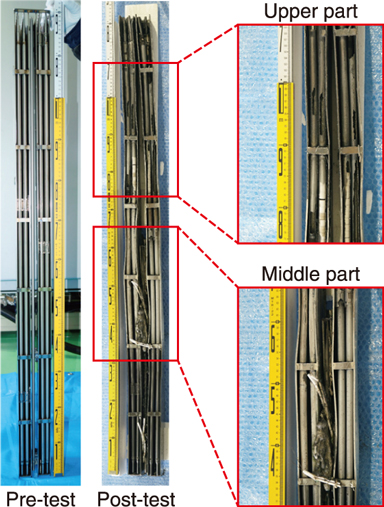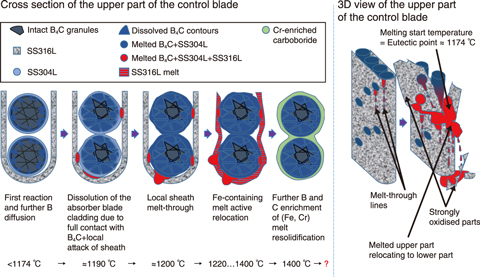
Fig.1-6 Sample used to simulate a part of a typical Japanese BWR fuel assembly

Fig.1-7 Schematic of the control blade degradation mechanism at an early phase of the nuclear accident under steam-starved conditions
Since the accident at the TEPCO’s Fukushima Daiichi NPS (1F), the researchers have aimed to uncover new features of the influence of boron carbide (B4C) on the 1F accident progression. Although boron is necessary in BWR reactors, the presence of B4C has led to low-temperature eutectics with Fe, formation of very hard phases with Zr and Cr, and the evaporation in hot steam as B-aerosols.
To support 1F decommissioning by understanding the final redistribution of B and C, a mock-up assembly in the Large-scale Equipment for Investigation of Severe Accidents in Nuclear reactors (LEISAN) facility was designed to recreate the accident conditions of Unit 2 at 1F. The results indicated that the control blade did not melt completely and contained intact B4C-granules even at 1500 ℃, as shown in Fig.1-6.
Nevertheless, a significant portion of the stainless steel (SS) liquefied (with help of B4C) relocated to lower elevations, and solidified. As a result, the gap between the control blade and channel box was blocked at the test sample elevations where the temperature was roughly 1174 ℃-1250 ℃.
A schematic representation of the control blade degradation mechanism at an early phase of nuclear accident up to 1500 ℃ under steam-starved conditions is represented in the Fig.1-7. An analysis of the survived residuals indicated that contact between B4C and SS resulted in the formation of Cr-rich carboborides, which surrounded the B4C granules and significantly decreased further B transport outside of the control rod and, thus suppressing the formation of B-aerosols.
The upper residuals were found to be oversaturated with B and C and thus very hard, but fragile. The blockage, containing mostly melts with lower concentrations of dissolved B and C, was hard and robust, thus representing an additional difficulty for 1F decommissioning.
Thus, B and C create the first wave of melt during the early stage of an accident. This solid melt creates robust blockages, representing significant difficulties for decommissioning. The part of the control blade that survived the first melt contained trapped B4C protected by the Cr-rich layer with carboborides. Due to encapsulation of B4C by high-melting point compounds under Unit 2 accident conditions, direct contact with environment was limited, thus formation of B-aerosols was probably shifted to late phase of the accident, where melting of high-temperature materials can be possible.
This work was part of the project “Advanced Multi-Scale Modelling and Experimental Tests on Fuel Degradation in Severe Accident Conditions”, supported by the Agency of Natural Resources and Energy (ANRE), the Ministry of Economy, Trade and Industry (METI), Japan.